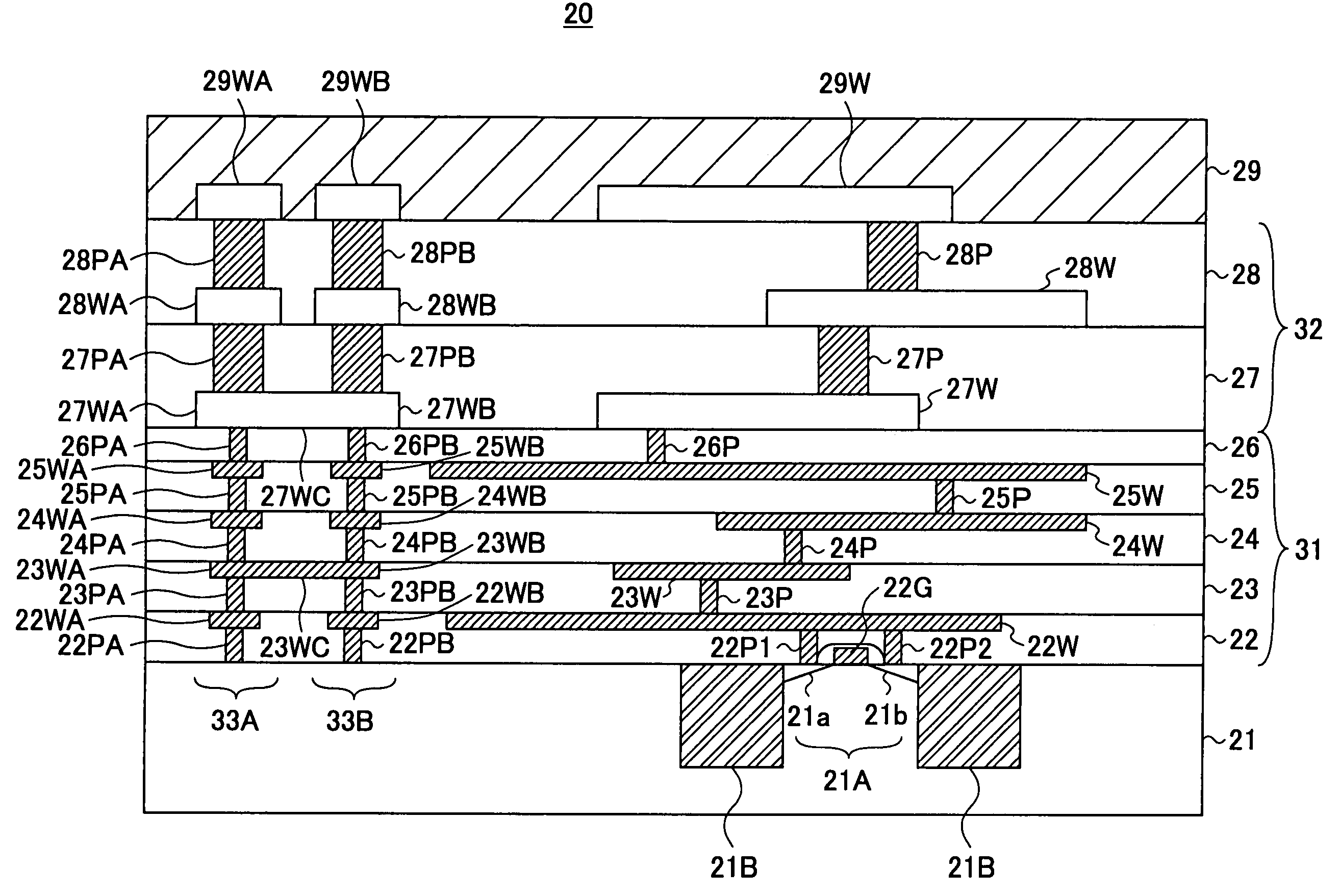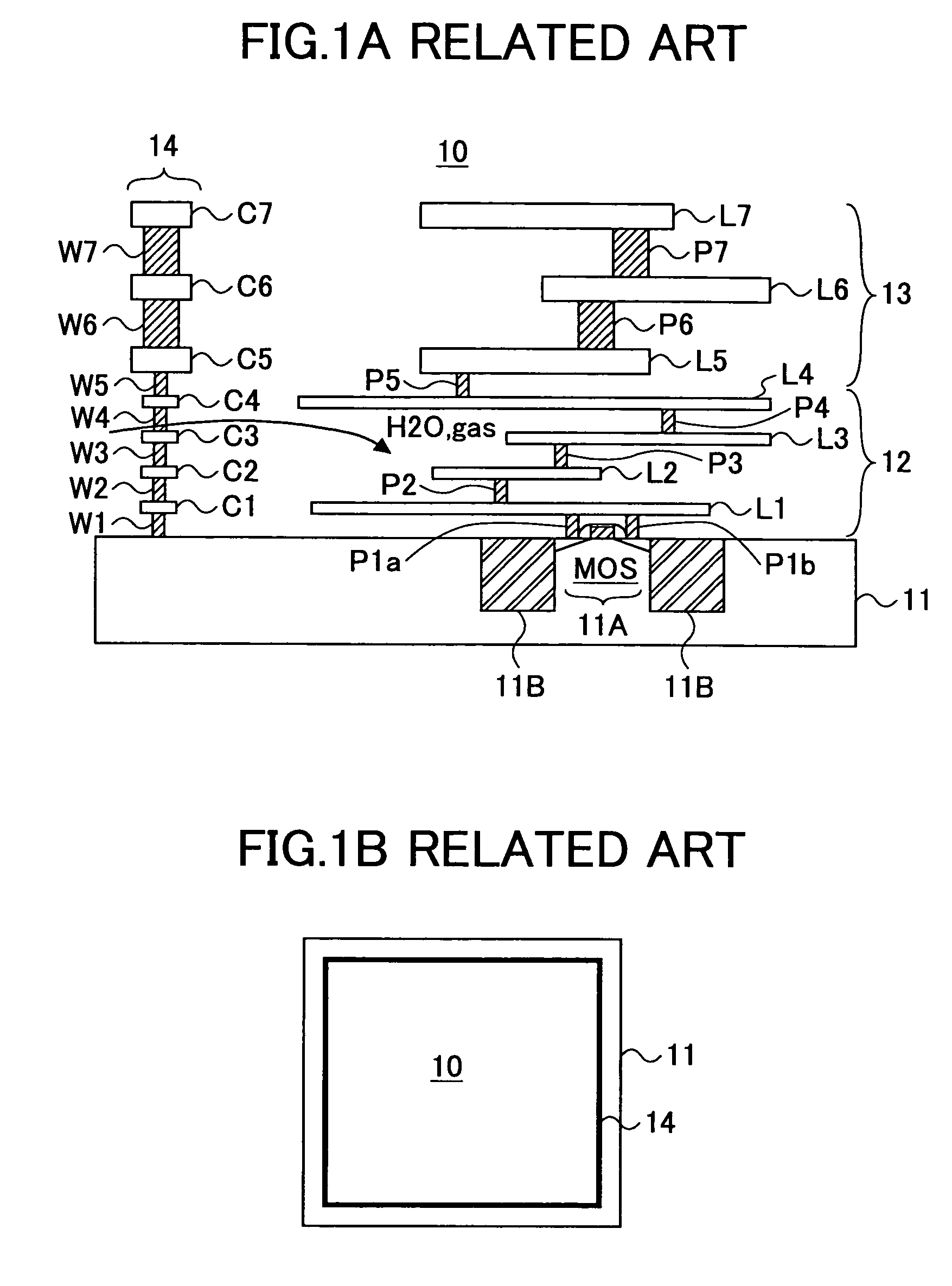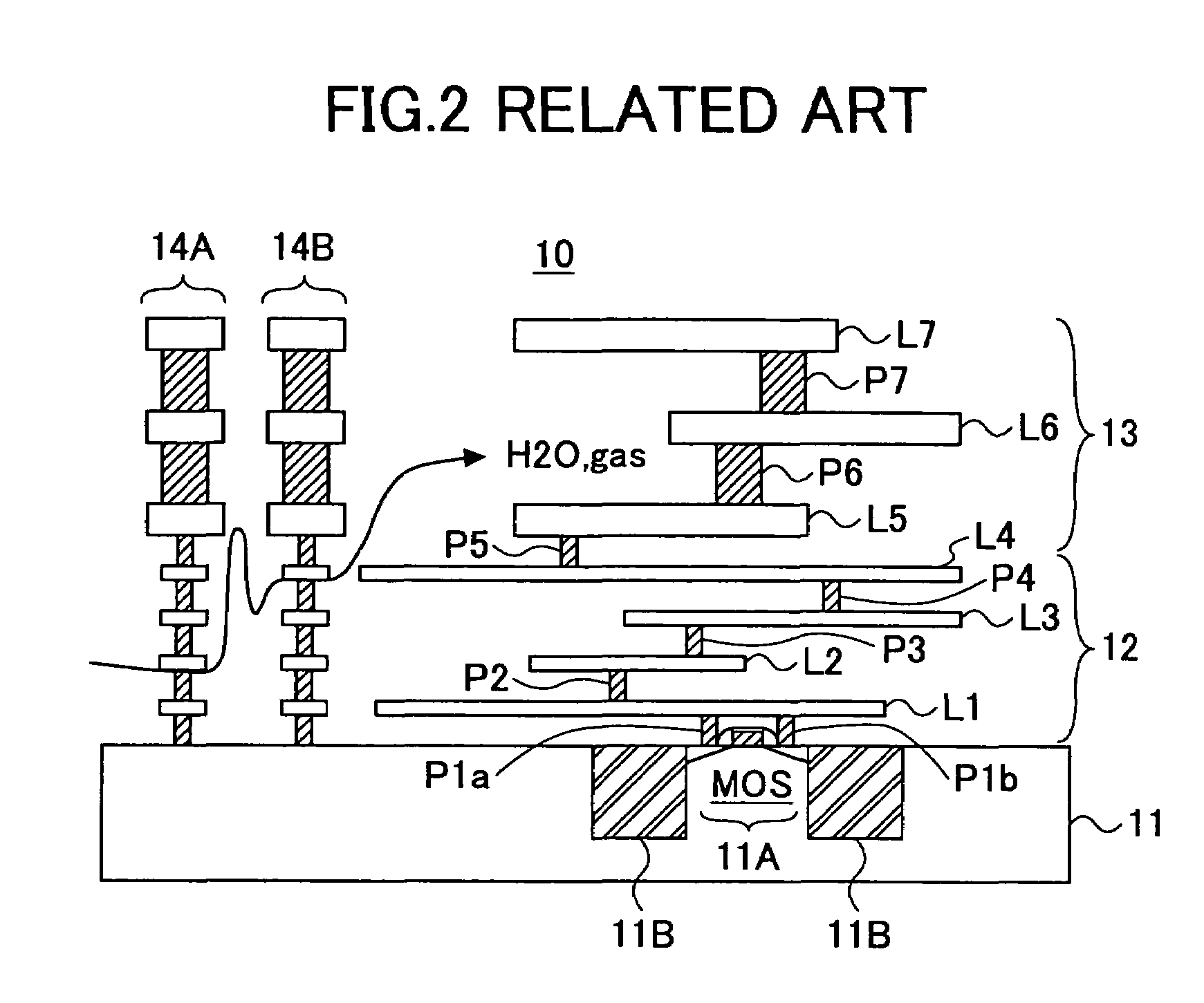Semiconductor device having a guard ring
- Summary
- Abstract
- Description
- Claims
- Application Information
AI Technical Summary
Benefits of technology
Problems solved by technology
Method used
Image
Examples
first embodiment
[0052]FIG. 3 shows the construction of a semiconductor integrated circuit 20 according to a first embodiment of the present invention.
[0053]Referring to FIG. 3, the semiconductor integrated circuit 20 is formed on a Si substrate 21 having a device region 21A defined by a device isolation structure 21B, and a MOS transistor including a gate electrode 22G and diffusion regions 21a and 21b is formed in the device region 21A such that the diffusion regions 21a and 21b are formed in the Si substrate 21 at both lateral sides of the gate electrode 22G. In FIG. 3, it should be noted that illustration of the gate insulation film is omitted. Further, similarly to a usual MOS transistor, the gate electrode 22G is provided with a pair of sidewall insulation films of SiO2 or SiON.
[0054]The gate electrode 22G is covered by an interlayer insulation film 22 formed on the substrate 21, wherein the interlayer insulation film 22 forms a part of the first multilayer interconnection structure 31 formed ...
second embodiment
[0085]FIG. 9 shows the construction of a semiconductor device 40 according to a second embodiment of the present invention, wherein those parts corresponding to the parts explained previously are designated by the same reference numerals and description thereof will be omitted.
[0086]Referring to FIG. 9, the interval between the guard ring 33A and the guard ring 33B on the substrate 21 is reduced in the present embodiment, and associated with this, there is formed, on the conductor pattern 27WC, a single guard ring 33C in the form of stacking of: a single conductor wall 27PC corresponding to the conductor plug 27P; a single conductor pattern 28WC corresponding to the interconnection layer 28W; a single conductor wall 28PC corresponding to the conductor plug 28P; and a single conductor pattern 29WC corresponding to the interconnection layer 29W.
[0087]As shown in FIG. 9, in the semiconductor device of the construction in which the multilayer interconnection structure 32 including there...
PUM
 Login to View More
Login to View More Abstract
Description
Claims
Application Information
 Login to View More
Login to View More - R&D
- Intellectual Property
- Life Sciences
- Materials
- Tech Scout
- Unparalleled Data Quality
- Higher Quality Content
- 60% Fewer Hallucinations
Browse by: Latest US Patents, China's latest patents, Technical Efficacy Thesaurus, Application Domain, Technology Topic, Popular Technical Reports.
© 2025 PatSnap. All rights reserved.Legal|Privacy policy|Modern Slavery Act Transparency Statement|Sitemap|About US| Contact US: help@patsnap.com



